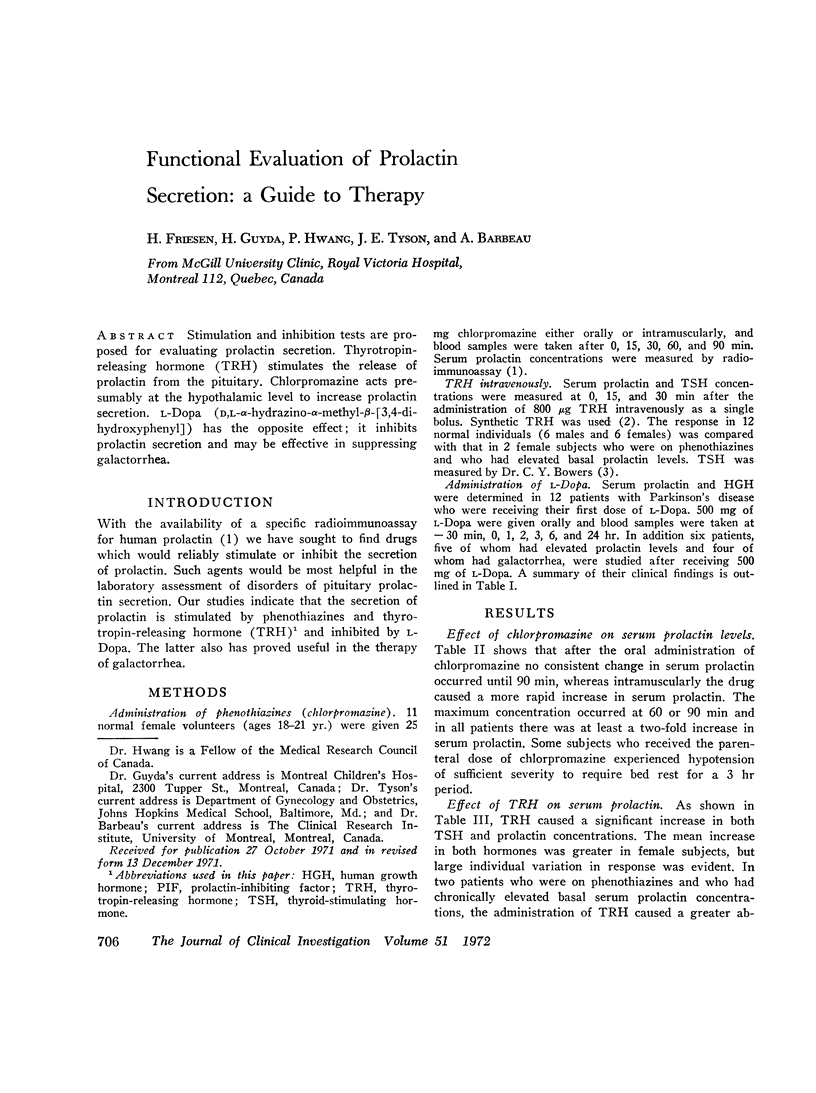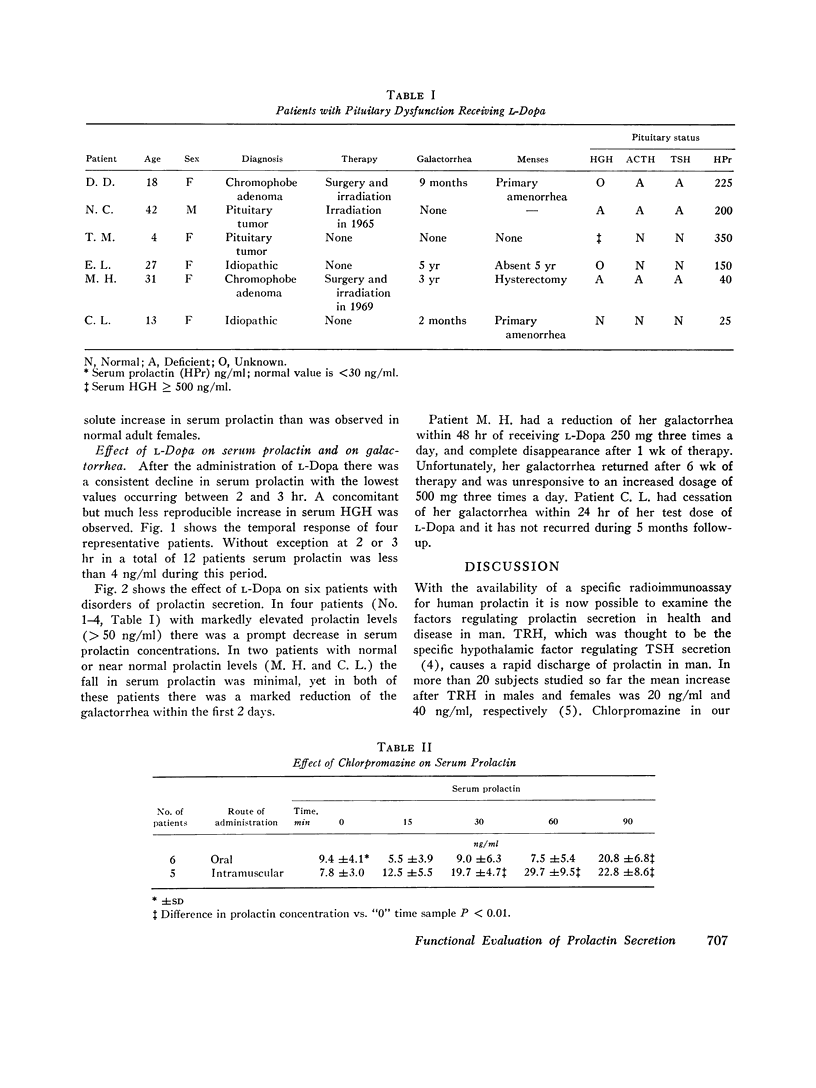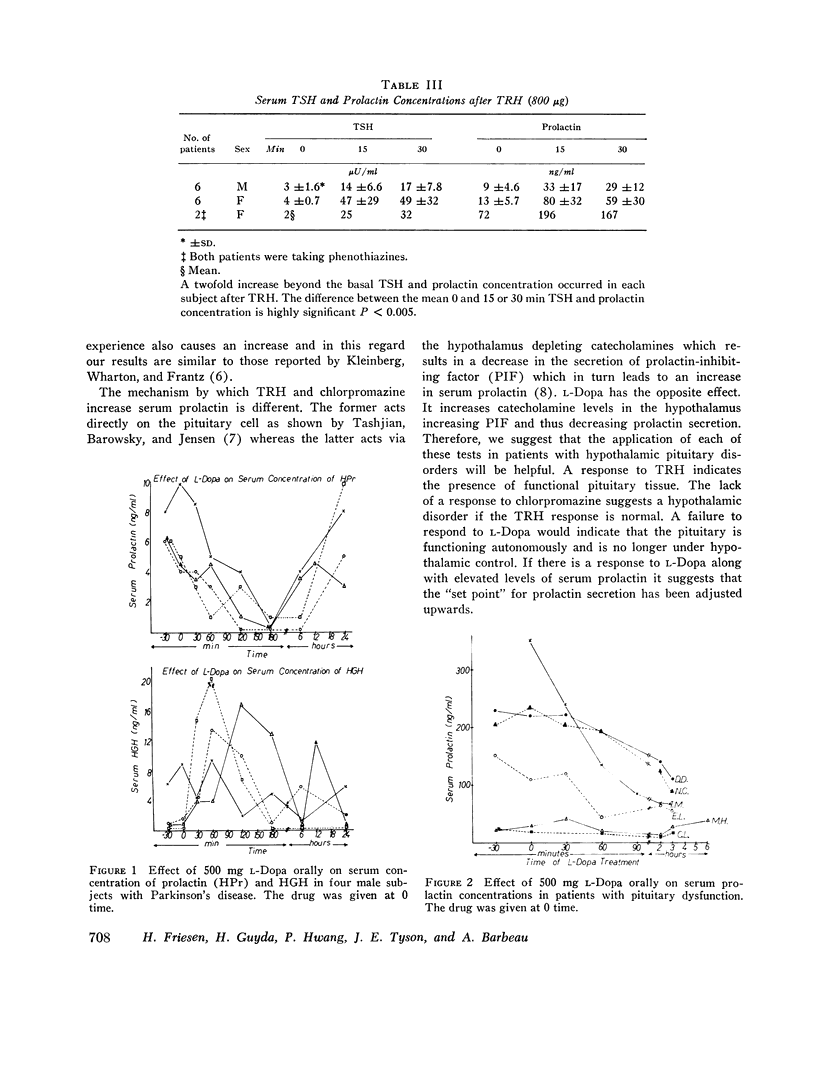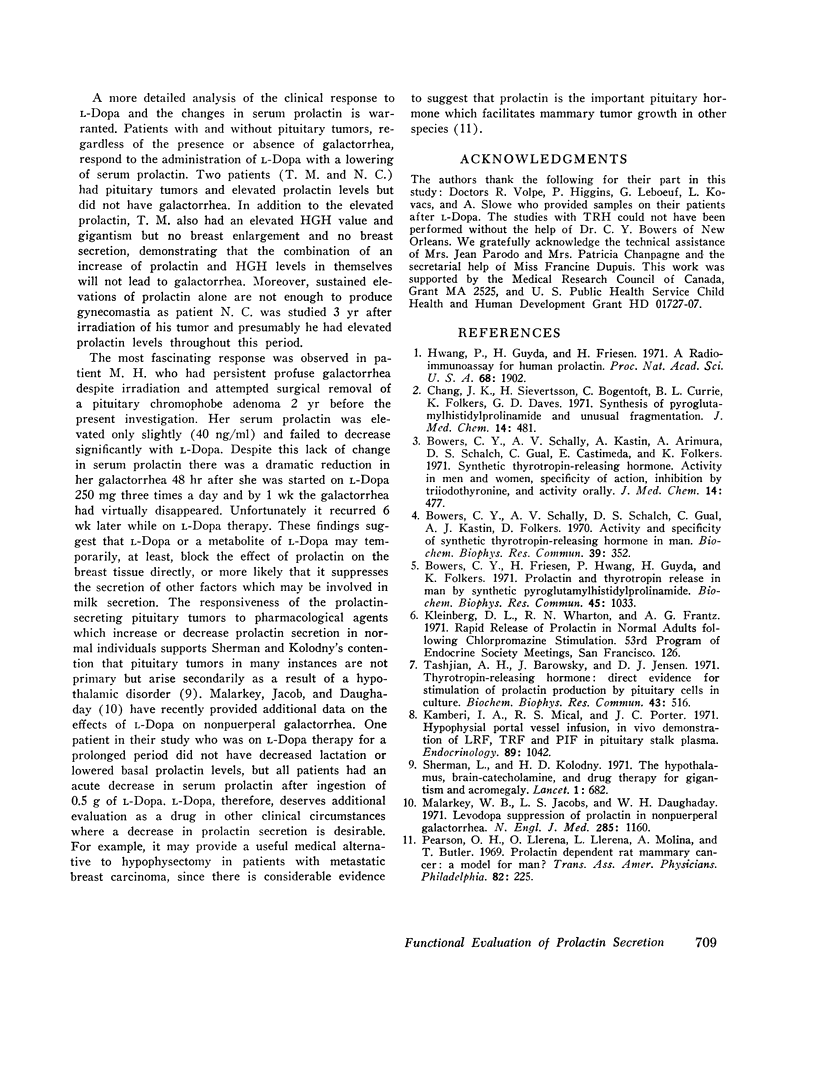Abstract
Stimulation and inhibition tests are proposed for evaluating prolactin secretion. Thyrotropin-releasing hormone (TRH) stimulates the release of prolactin from the pituitary. Chlorpromazine acts presumably at the hypothalamic level to increase prolactin secretion. L-Dopa (D,L-α-hydrazino-α-methyl-β-[3,4-di-hydroxyphenyl]) has the opposite effect; it inhibits prolactin secretion and may be effective in suppressing galactorrhea.
Full text
PDF



Selected References
These references are in PubMed. This may not be the complete list of references from this article.
- Bowers C. Y., Friesen H. G., Hwang P., Guyda H. J., Folkers K. Prolactin and thyrotropin release in man by synthetic pyroglutamyl-histidyl-prolinamide. Biochem Biophys Res Commun. 1971 Nov;45(4):1033–1041. doi: 10.1016/0006-291x(71)90441-4. [DOI] [PubMed] [Google Scholar]
- Bowers C. Y., Schally A. V., Kastin A., Arimura A., Schalch D. S., Gual C., Castineda E., Folkers K. Synthetic thyrotropin-releasing hormone. Activity in men and women, specificity of action, inhibition by triiodothyronine, and activity orally. J Med Chem. 1971 Jun;14(6):477–481. doi: 10.1021/jm00288a003. [DOI] [PubMed] [Google Scholar]
- Bowers C. Y., Schally A. V., Schalch D. S., Gual C., Kastin A. J., Folkers K. Activity and specificity of synthetic thyrotropin-releasing hormone in man. Biochem Biophys Res Commun. 1970 May 11;39(3):352–355. doi: 10.1016/0006-291x(70)90583-8. [DOI] [PubMed] [Google Scholar]
- Chang J. K., Sievertsson H., Bogentoft C., Currie B., Folkers K., Daves G. D., Jr Syntheses of pyroglutamylhistidylprolinamide and unusual mass fragmentation. J Med Chem. 1971 Jun;14(6):481–483. doi: 10.1021/jm00288a004. [DOI] [PubMed] [Google Scholar]
- Hwang P., Guyda H., Friesen H. A radioimmunoassay for human prolactin. Proc Natl Acad Sci U S A. 1971 Aug;68(8):1902–1906. doi: 10.1073/pnas.68.8.1902. [DOI] [PMC free article] [PubMed] [Google Scholar]
- Kamberi I. A., Mical R. S., Porter J. C. Hypophysial portal vessel infusion: in vivo demonstration of LRF, FRF, and PIF in pituitary stalk plasma. Endocrinology. 1971 Oct;89(4):1042–1046. doi: 10.1210/endo-89-4-1042. [DOI] [PubMed] [Google Scholar]
- Malarkey W. B., Jacobs L. S., Daughaday W. H. Levodopa suppression of prolactin in nonpuerperal galactorrhea. N Engl J Med. 1971 Nov 18;285(21):1160–1163. doi: 10.1056/NEJM197111182852102. [DOI] [PubMed] [Google Scholar]
- Pearson O. H., Llerena O., Llerena L., Molina A., Butler T. Prolactin-dependent rat mammary cancer: a model for man? Trans Assoc Am Physicians. 1969;82:225–238. [PubMed] [Google Scholar]
- Sherman L., Kolodny H. D. The hypothalamus, brain-catecholamines, and drug therapy for gigantism and acromegaly. Lancet. 1971 Apr 3;1(7701):682–685. doi: 10.1016/s0140-6736(71)92685-7. [DOI] [PubMed] [Google Scholar]
- Tashjian A. H., Jr, Barowsky N. J., Jensen D. K. Thyrotropin releasing hormone: direct evidence for stimulation of prolactin production by pituitary cells in culture. Biochem Biophys Res Commun. 1971 May 7;43(3):516–523. doi: 10.1016/0006-291x(71)90644-9. [DOI] [PubMed] [Google Scholar]


